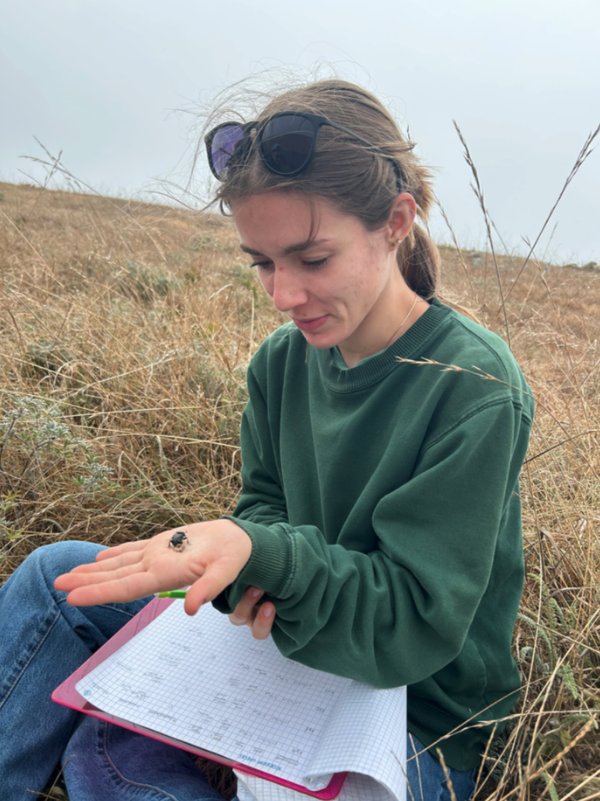
Summer with Burying Beetles
A Santa Rosa Junior College - Bodega Marine Laboratory Internship Program Story
Sydney Franks is a fourth-year Biology major at SRJC intending to transfer in the fall of 2024. She is interested in exploring ecological research and was mentored by Tracie Hayes at the Bodega Marine Lab in the summer of 2023.
This summer I was given the opportunity to intern at the Bodega Marine Lab. Prior to this, I had no research experience and did not know what exactly I would like to do majoring in Biology. I knew I wanted to gain research experience in a lab or doing field work to expand the options for my future.
My mentor, Tracie Hayes, is a fourth-year Ph.D. candidate at UC Davis working in the Yang Lab at BML. Her work is focused on a species of burying beetle, the yellow-bellied burying beetle, Nicrophorus guttula. These beetles are carrion beetles and require a small carcass that they then bury in order to reproduce. After burying the carcass, the female will lay eggs in the soil, and after hatching, both the male and female will engage in parental care of the larval offspring. However, before I was even paired with a mentor for this internship, I was asked if I was comfortable working with insects. I did not know if I was, or what the extent of work with insects would be, but I am very grateful I said yes because the work we did changed how I felt about insects completely.
For her project, Tracie is researching the ‘effects of ephemeral resource patches on the reproductive output and population characteristics’ of these particular beetles. Last summer, in 2022, Tracie’s experiment focused on the effects of carcass dryness and competition on burying beetle reproduction. She found that the beetles are sensitive to heat and dryness, for both themselves and their respective reproductive carcass. This summer, using the results from before, Tracie wanted to test whether a microhabitat, in this case lupine leaf litter, was able to buffer any effects of heat and dryness on carcass availability. Her experimental setup involved trapping the beetles in buckets by luring them with a mouse carcass. After trapped, the beetles were sexed and paired up, and then given an ID for a corresponding reproductive enclosure. These enclosures, dubbed ‘nicrocosms’ by Tracie, consisted of different conditions; these were the variables. Inside each nicrocosm, filled about halfway with soil, was a mouse carcass with varying degrees of dehydration, labelled either A, B, or C. The second variable was the presence or absence of lupine leaf litter, a native plant, which was to act as insulation for the carcass. The nicrocosms were checked for reproductive success and output after two weeks, and in my last week, I finally had the pleasure of getting to see successful larvae!

This internship and my mentor Tracie taught me so much and gave me an invaluable experience and insight to the world of population ecology research. I saw the ups and downs of research as well; that there won’t always be success but to continue to try. It also allowed me the chance to be at the beautiful Bodega Marine Reserve all summer and gain a new appreciation for certain groups in nature.
About the Program:
The SRJC-BML Internship Program provides summer research opportunities for Santa Rosa Junior College students at the Bodega Marine Laboratory.
